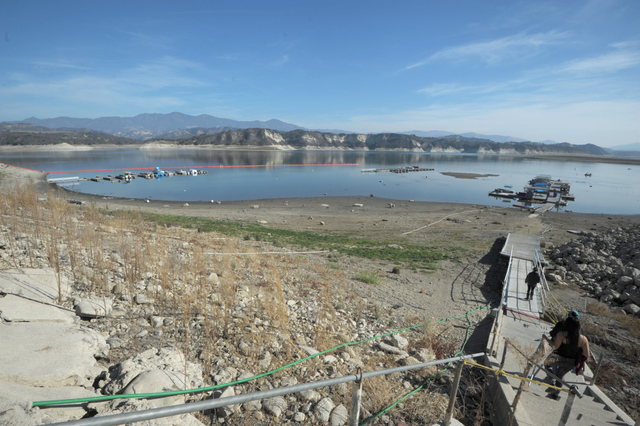Speed of Drought Confounds Water Planners
Agencies Gamble on Need and Price

About two weeks ago, three South Coast water agencies — desperate to augment supplies in the face of a withering drought — combined forces to place a bid on surplus State Water from purveyors in Madera County. They offered what they thought at the time was an extravagant amount: $1,600 an acre-foot. They didn’t come close. The winning bid weighed in at a staggering $2,200 per acre-foot, and the three thirsty water districts, Montecito, Santa Barbara and Solvang, came up empty.
The scramble to secure additional water supplies — especially urgent for the Montecito district whose managers have warned about “going dry by July” — is proving problematic at best. Although the water agencies making up the Central Coast Water Authority — the entity responsible for importing State Water to the South Coast — has just hired an independent water broker to find rice farmers who might make more money selling water than raising a crop, their path is anything but clear. In an ideal world, they’re hoping to secure 10,000 additional acre-feet of water. To put that in perspective, the City of Santa Barbara uses about 14,000 a year. As a matter of law and reality, however, it’s uncertain whether anyone will be allowed to ship any water drawn from rivers north of California’s infamously challenged San Joaquin Delta — an environmental black hole caused by the years of over-pumping. And nobody south of the Delta has any water to sell.
Making this conundrum crueler yet, it turns out the Goleta Water District sold 4,000 acre-feet of its excess State Water just nine months ago and at one-tenth the price the Madera agencies got. Montecito managed to snag 707 acre-feet, and Solvang jumped in for 600, but the vast majority of the water was sold to agencies throughout the state. Making such long-distance sales possible in this case is the same network of pipes and pumps that brought California’s escalating water crisis to critical mass this year: the State Water system. For the first time ever, managers of the State Water system announced this December that they would not provide any water to any customers at all. It was unprecedented, and water agencies hovering on the edge of sustainability suddenly found their gap between supply and demand unbridgeable.
In hindsight, the sale might seem terminally short sighted, but according to Dave Matson, assistant manager of the Goleta Water District, it made plenty of sense when it was consummated last June. Then, the Lake Cachuma reservoir was nearly twice as full as it is today. And the district had 7,000 acre-feet of State Water in storage in the San Luis Reservoir, located in California’s Central Valley, well beyond the 4,000 acre-foot drought buffer district water planners aim for. At that time, Matson said, Goleta hadn’t used any of its State Water entitlements for several years. The more pressing fear, he said, was that the San Luis Reservoir might actually spill — the way Cachuma did in 2011 — and Goleta would have no claim on any water going over the dam. No one ever dreamed the State Water system would effectively go dry. “Beyond the twenty-twenty of hindsight, the deal has to be evaluated based on the specific factors at the time,” Matson said. “And at that time, it made sense.”
By today’s standards, however, $253 an acre-foot doesn’t qualify as chump change; if Goleta were to sell the same water today, at today’s prices, it could make $8 million. Last June, the district made a little over $1 million. According to Darlene Beirig of the Montecito Water District, the district grabbed a massive amount of water in 2013 in anticipation of a possible shortfall. The district, she said, secured 3,881 acre-feet on supplemental supplies. But, like Matson, she said the fear was more that the reservoirs might spill. “It’s always a delicate balance,” she explained. “If we were to buy too much water and it rained, you risk the possibility of the dam spilling and losing your water.”
Perhaps Tom Fayram of the Santa Barbara County Water Agency put it best, quoting former baseball sage Yogi Berra: “The problem with predictions,” Fayram said, “is that they involve the future.”



